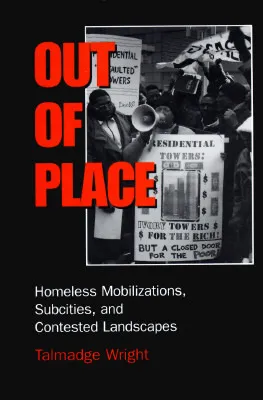Out of Place: Homeless Mobilizations, Subcities, and Contested Landscapes (Suny Series - Interruptions - Border Testimony
By (author): "Talmadge Wright"
Publish Date:
May 8th 1997
ISBN0791433692
ISBN139780791433690
AsinOut of Place: Homeless Mobilizations, Subcities, and Contested Landscapes (Suny Series - Interruptions - Border Testimony
Original titleOut of Place: Homeless Mobilizations, Subcities, and Contested Landscapes
SeriesInterruptions: Border Testimony(ies) and Critical Discourse/s
Discusses the impact of inner city redevelopment programs and policies on the homeless and shows the methods used (civil protests, squatting, and legal advocacy) by the homeless to organize a tactical resistance to restructuring efforts. Presents case studies of two different types of homeless organized resistance groups in Chicago and San Jose.Out of Place: Homeless Mobilizations, Subcities, and Contested Landscapes details the development of two organized homeless resistances in two different cities. From the redevelopment protesters and squatting activities of the Student-Homeless Alliance in San Jose to the squatter camps of Tranquility City in Chicago, the differences and similarities between both groups are highlighted within the context of city redevelopment policies. Wright argues for considering homelessness not merely as an issue for social welfare, but first and foremost as a land use issue directly connected to issues of gentrification, displacement, and the cultural imaginings of what the city should look like by those who have the power to shape its development.How the homeless combat the restructurings of everyday life, how they attempt to establish a "place" is understood within the context of tactical resistances. Questions of collective identity and collective action are raised as a result of the successful organizing efforts of homeless groups who refuse to be victims. The struggle between individual and collective forms of empowerment is highlighted, with the conclusions pointing to the necessity to rethink and go beyond the traditional solutions of more housing and job training.
